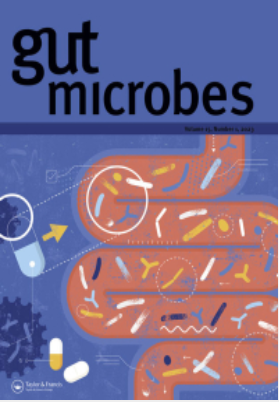Gut microbiota determines the fate of dietary fiber-targeted interventions in host health.
IF 11
1区 医学
Q1 GASTROENTEROLOGY & HEPATOLOGY
引用次数: 0
Abstract
Epidemiological investigation confirmed that the intake of dietary fiber (DF) is closely related to human health, and the most important factor affecting the physiological function of DF, besides its physicochemical properties, is the gut microbiota. This paper mainly summarizes the interaction between DF and gut microbiota, including the influence of DF on the colonization of gut microbiota based on its different physicochemical properties, and the physiological role of gut microbiota in destroying the complex molecular structure of DF by encoding carbohydrate-active enzymes, thus producing small molecular products that affect the metabolism of the host. Taking cardiovascular disease (Atherosclerosis and hypertension), liver disease, and immune diseases as examples, it is confirmed that some DF, such as fructo-oligosaccharide, galactooligosaccharide, xylo-oligosaccharide, and inulin, have prebiotic-like physiological effects. These effects are dependent on the metabolites produced by the gut microbiota. Therefore, this paper further explores how DF affects the gut microbiota's production of substances such as short-chain fatty acids, bile acids, and tryptophan metabolites, and provides a preliminary explanation of the mechanisms associated with their impact on host health. Finally, based on the structural properties of DF and the large heterogeneity in the composition of the population gut microbiota, it may be a future trend to utilize DF and the gut microbiota to correlate host health for precision nutrition by combining the information from population disease databases.肠道微生物群决定了以膳食纤维为目标的干预措施在宿主健康中的命运。
流行病学调查证实,膳食纤维(DF)的摄入量与人体健康密切相关,而影响DF生理功能的除了其理化性质外,最重要的因素是肠道微生物群。本文主要总结了 DF 与肠道微生物群的相互作用,包括 DF 根据其不同的理化特性对肠道微生物群定植的影响,以及肠道微生物群通过编码碳水化合物活性酶破坏 DF 复杂的分子结构,从而产生影响宿主代谢的小分子产物的生理作用。以心血管疾病(动脉粥样硬化和高血压)、肝脏疾病和免疫疾病为例,已证实一些 DF(如果寡糖、半乳寡糖、木寡糖和菊粉)具有类似益生元的生理效应。这些作用取决于肠道微生物群产生的代谢物。因此,本文进一步探讨了 DF 如何影响肠道微生物群产生短链脂肪酸、胆汁酸和色氨酸代谢产物等物质,并初步解释了这些物质对宿主健康影响的相关机制。最后,基于 DF 的结构特性和人群肠道微生物群组成的巨大异质性,结合人群疾病数据库的信息,利用 DF 和肠道微生物群来关联宿主健康以实现精准营养可能是未来的趋势。
本文章由计算机程序翻译,如有差异,请以英文原文为准。
求助全文
约1分钟内获得全文
求助全文
来源期刊

Gut Microbes
Medicine-Microbiology (medical)
CiteScore
18.20
自引率
3.30%
发文量
196
审稿时长
10 weeks
期刊介绍:
The intestinal microbiota plays a crucial role in human physiology, influencing various aspects of health and disease such as nutrition, obesity, brain function, allergic responses, immunity, inflammatory bowel disease, irritable bowel syndrome, cancer development, cardiac disease, liver disease, and more.
Gut Microbes serves as a platform for showcasing and discussing state-of-the-art research related to the microorganisms present in the intestine. The journal emphasizes mechanistic and cause-and-effect studies. Additionally, it has a counterpart, Gut Microbes Reports, which places a greater focus on emerging topics and comparative and incremental studies.
 求助内容:
求助内容: 应助结果提醒方式:
应助结果提醒方式:


